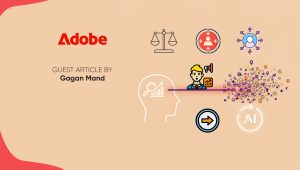New data regulations pose challenges on how businesses store, process, and manage data. From the EU’s General Data Protection Regulation (GDPR) and the California Consumer Privacy Act (CCPA), to the more recent Chinese Personal Information Protection Law (PIPL), dozens of regions across the world have passed laws or introduced pending legislation that restrict the flow of data. And while earlier laws took many years to take effect, new regulations are moving much faster.
That means organizations must have an agile approach to compliance so they’re prepared when new laws go into effect, because compliance with these regulations is about much more than simply removing first and last names. Personal data can be found broadly in multiple areas of applications: case comments, a link to the asset which describes what you have, free text, emails that include names and basic information, and much more. That’s why having a no-code platform is critical. Well-built no-code platforms help address these issues in an extremely efficient and agile manner.
A no-code platform offers solutions that non-technical people, such as Salesforce Admins, can implement rather than relying on expensive and often limited developer resources. That means high-quality solutions go live faster at a reduced cost than if a developer implemented them.
Marketing Technology News: The Art of Customer Journey Mapping
For example, let’s say a Salesforce administrator needs to add a new related custom object attached to a contact to their Salesforce environment, which will contain Personal Identifiable Information (PII). The Salesforce Admin can utilize the no-code platform to ensure that the object adheres to the organization’s policies for handling PII. Compliance is achieved more quickly and easily than if a developer had to modify the code.
Another example is data Subject Requests. While privacy platforms like OneTrust help organizations manage data privacy requirements and requests, such as GDPR’s Right to be Forgotten, a dedicated solution is often still required to process the requests in Salesforce. Manually processing these requests not only takes a significant amount of time compared to an automated solution, but it’s also prone to errors.
Efficiency of no-code
Coding a solution for complying with data subject requests is time-consuming and expensive, because it requires Salesforce developers not only to build and implement the code, but to maintain it too. Every time a new field is added in Salesforce, the code must be modified to support that field. A no-code solution enables non-technical employees who are already familiar with the application, workflows and the underlying data to make these modifications.
While a no-code platform ultimately benefits the entire organization by saving time, money, and conserving developer resources, non-technical stakeholders like Salesforce administrators reap the lion’s share of benefits. That’s because no-code platforms make it easier and faster for them to ensure that PII data in Salesforce that they’re responsible for maintaining complies with their organization’s data privacy policies and practices.
It’s also inherently safer than coding applications from scratch. When programmers write code, it’s possible to introduce infinite loops and other bugs that can harm the system they’re working on. No-code platforms have been built so that, while non-technical employees gain fine capabilities to create new functionality, these platforms have presumably been tested to avoid introducing serious bugs or enabling the user to damage or abuse the system.
Marketing Technology News: Meta Addresses Post-IDFA Attribution Challenge
Security and integration
When looking for a no-code platform to manage privacy, it’s critical to ensure that the platform is secure. After all, if the no-code platform isn’t secure, how can it possibly create apps that will enable you to comply with privacy regulations? So, like any system that’s going to extract your data, the no-code platform needs multiple layers of encryption to ensure information is not visible to others, including the SaaS provider if the platform is delivered as a service. Also, have IT or an outside specialist conduct a security audit to make sure it’s compliant with common security standards, of which ISO-27001 and SOC-2 are the two most important.
It’s also important to make sure the platform truly understands the system with which it is integrating. If the no-code platform doesn’t understand the relationships between objects in the system it’s working with, it won’t know how to grab the right information from the right place, the no-code platform will be useless and the company will need to get IT to do development. General-purpose no-code privacy platforms typically lack the deep knowledge of systems required to ensure complete compliance.
No-code platforms can provide an elegant and efficient solution for compliance with data privacy regulations, empowering non-technical employees to create apps that mesh perfectly with business processes. So long as the organization ensures that the no-code platform is secure and that it can integrate deeply with the targeted systems, organizations can comply at a much lower cost in far less time.
Marketing Technology News: Five Things Retail Brands Need To Consider To Make 2022 A Success


















